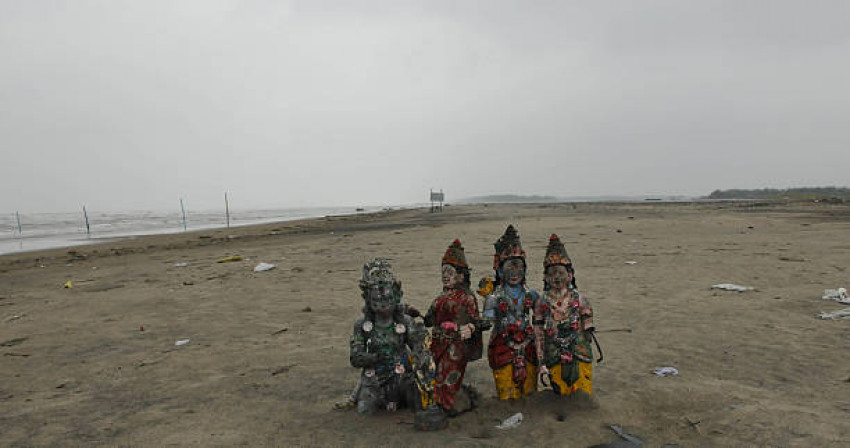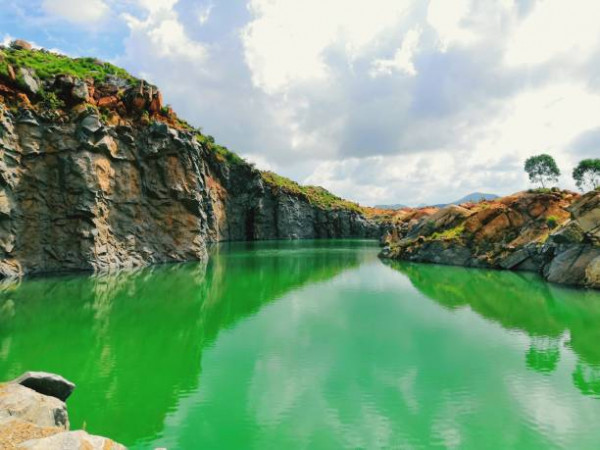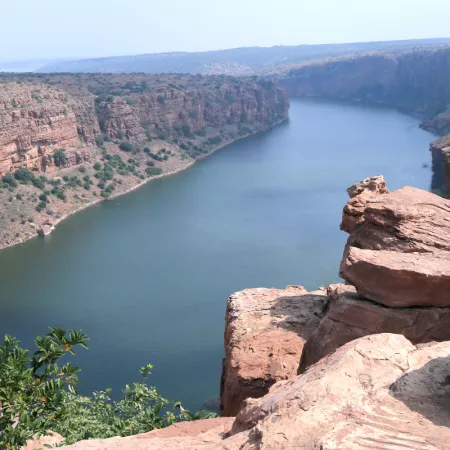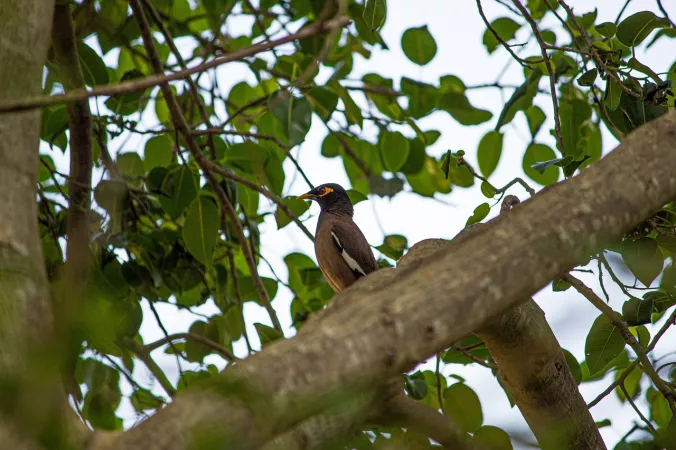Samalkot Travel Guide
Samalkot is a quaint town located in the East Godavari district of Andhra Pradesh, India. Known for its rich historical significance, Samalkot boasts of ancient temples, serene landscapes, and a vibrant cultural heritage. The town's strategic location near the coast and lush greenery make it a popular destination for travelers seeking a peaceful retreat.Top Attractions in Samalkot
- Draksharamam Temple
- Kukkuteswara Swamy Temple
- Bhimeswara Temple
- Pithapuram
Samalkot is Famous for
Ancient temples and spiritual significance.Top Attractions in Samalkot
Explore the ancient temples, experience the local culture, and witness the natural beauty of Samalkot.
What's Great about Travelling to Samalkot?
- Rich cultural heritage
- Tranquil environment
- Ancient temples
What's Not So Great about Travelling to Samalkot?
- Limited nightlife options
- Remote location
- Language barrier for non-Telugu speakers
Travel Tips for Samalkot
- Check visa requirements before travel
- Book accommodation in advance
- Respect local customs and traditions
Important Samalkot trip information
- Ideal Duration: 2-3 days
- Best Time to Visit: October to March
- Nearby Airports and Railway Stations: Rajahmundry Airport and Samalkot Railway Station
Top 7 Places to visit in Samalkot
FAQ's on Samalkot
Q1: What is the best time to visit Samalkot?
The best time to visit Samalkot is during the winter months from November to February when the weather is pleasant and ideal for exploring the attractions. Avoid the monsoon season from July to September due to heavy rainfall. Tourist seasons are generally in alignment with these favorable weather conditions.
Q2: Do I need a visa to travel to Samalkot?
Travelers to Samalkot require a valid visa to enter the country, with exceptions for citizens of certain countries under visa-free agreements. It is advisable to check the specific visa requirements based on your nationality before planning your trip.
Q3: What are the must-visit attractions in Samalkot?
Samalkot boasts attractions like the Sri Chalukya Kumararama Sri Bhimeswara Swamy Temple, Draksharama Temple, and the Kakinada Beach. Don't miss exploring the Coringa Wildlife Sanctuary and the verdant Konaseema region for a glimpse of the local culture.
Q4: Is Samalkot a safe place to travel?
Samalkot is generally a safe destination for travelers. However, it is advisable to exercise caution in crowded areas, avoid isolated places at night, and keep your belongings secure. Stay aware of your surroundings and follow common safety practices.
Q5: What is the local currency in Samalkot and can I use credit cards?
The local currency in Samalkot is the Indian Rupee (INR). ATMs are widely available in the main towns for cash withdrawals, and credit cards are accepted in most hotels, restaurants, and larger stores. It's recommended to carry some cash for smaller establishments.
Q6: What is the local cuisine like in Samalkot?
Samalkot offers a diverse culinary experience with its traditional Andhra cuisine, known for its spicy flavors and rich taste. Try local delicacies like Pesarattu, Gongura Mamsam, and Kakinada Kaja. Vegetarian options like Gutti Vankaya and Hyderabadi Biryani are also popular choices.
Q7: What transportation options are available in Samalkot?
Transportation in Samalkot includes public buses, auto-rickshaws, and taxis for local travel. Rental cars are available for more flexibility. The nearest major airport is in Rajahmundry, about 40 km away, with train services connecting to major cities in India.
Q8: Are there any cultural norms or etiquette I should be aware of when visiting Samalkot?
When visiting Samalkot, it's important to respect local customs like removing footwear before entering temples, dressing modestly, and greeting people with a traditional 'Namaste'. Avoid public displays of affection, especially in rural areas, and ask for permission before taking photographs of locals to show respect for their privacy.
Q9: I am a travel agent. How can I buy travel leads of Samalkot?
Register yourself as a travel agent at agents.tripclap.com and then you can buy travel leads to Samalkot once your account is approved. For more details contact our support team at +91-8069186564 or support@tripclap.com





